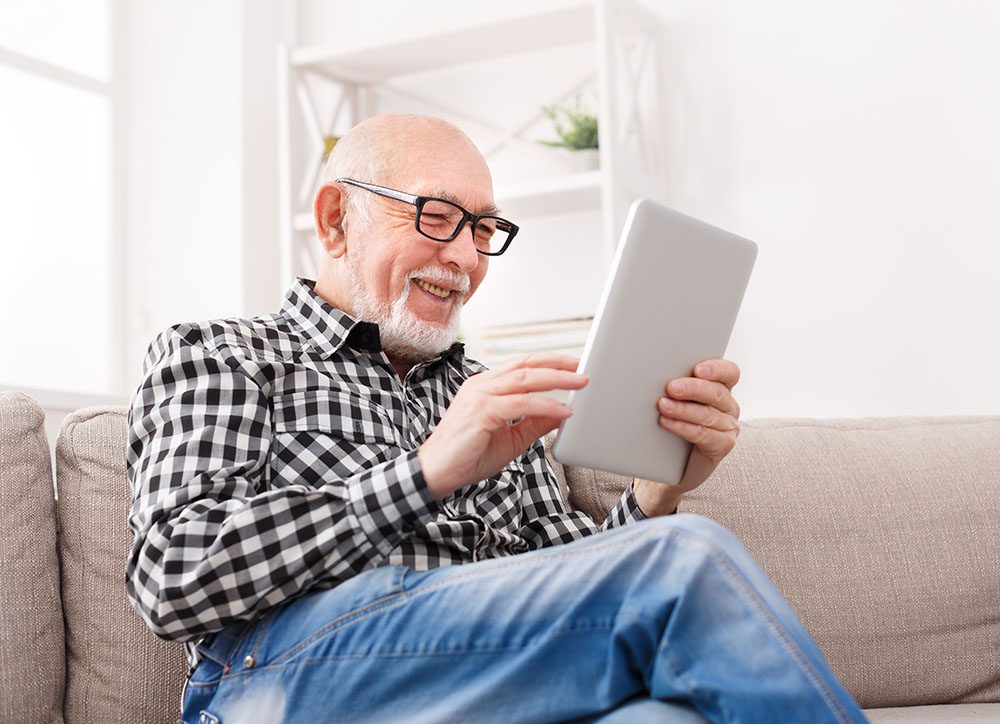Have you ever wished you could check on your mom or dad without driving all the way to their nursing home? Plenty of people have had the same thought, and installing a video camera in the nursing home has allowed some families to do just that. These cameras, which people sometimes refer to as “granny cams,” can be a convenient tool, especially during the COVID crisis. They give families an easy way to see how their loved one is doing via a video feed. Unfortunately, some of the key issues preventing the cameras from being widely adopted in the past remain unaddressed.
This article will share the main issues with nursing home video cameras and will close with a promising, innovative solution.
Video Cameras and Personal Privacy
Privacy is one of several challenges that these cameras face. For example, it is helpful to be able to see how a parent is doing when they’re alone in their room, but nobody wants to feel like someone is watching them. In addition to that, many seniors need help with the activities of daily living, or ADLs. Ensuring that the staff take good care of a parent is important to family members, but those ADLs can put a resident in a revealing position while in their room. That may make 24/7 video monitoring an unattractive prospect, unless there is a pressing reason to do so.
It can also present a problem if the camera records nursing home staff. They typically need to be alerted to the fact that a camera is installed, especially if the camera records audio. Recording audio of conversations usually falls under “wiretap” laws and is not permitted unless at least one person involved knows that the conversation is being recorded. A conversation between two nurses, for example, would be considered private. A conversation between a nurse and a resident, on the other hand, would be legal as long as the resident knew about the camera. That level of specificity is important to protect privacy, but it has historically made the legality of “granny cams” hard to define.
Granny Cams Represent a Surveillance Mindset
The biggest difficulty with installing a video camera in a resident’s room is that it can create an adversarial dynamic, making the nursing home and the residents’ families feel like they are at odds with each other. Because of this, nursing homes have a complicated relationship with the cameras. It is important to strike the right balance between trusting someone completely and monitoring their every move. One extreme would be for families to install multiple cameras all over the room, keeping an eagle eye on every move that a nurse or staff member makes when they attend to the resident. On the other end of the spectrum, a family could drop their parent off and rarely check in on them, making the assumption that everything a resident needs would be provided by the nursing home staff.
Neither scenario is realistic or healthy. Nursing home staff work hard and deserve to be treated with respect. Residents need to connect and socialize, and need connection with their own family most of all. That said, it takes time to build trust, and most families couldn’t visit every day even before the COVID crisis. Placing a video camera in the nursing home room does help the family have peace of mind, but it can create tension as well.
Changing Legislation, Wiretap Laws, and Other Legal Challenges
Some of the tension around the cameras comes from the lack of legal clarity. Many states have not addressed questions from either the family or nursing home perspective. When it’s unclear whether families have the right to install a camera or not, any move or decision can easily be cast in a confrontational light. The COVID crisis has made resolving those issues more pressing, and the government response seems to be positive so far. Many states have begun working on legislation to set up guidelines and requirements for how cameras can be installed and used.
The updated legislation, as currently proposed, addresses some issues by defining what an appropriate level of notification should be. For example, specifying the size, location, and type of sign needed to alert people to the possibility of recording. Efforts to make the cameras legal should help, but are not a guarantee that no legal challenges could occur in the future.
Seniors Less Connected Due to Safety Concerns
There is a final confounding element to the video camera situation. Loneliness, and its toll on emotional wellbeing, is one of the many unseen costs of the COVID shutdown. Seniors are not able to get face time with friends and family, and that makes it hard for them to thrive. Seniors, who are most at risk, have little or no option to spend time with people. Removing such an important source of joy makes their daily lives much more difficult. Unfortunately, safety is important and visitors still can’t spend time with seniors. A normal video camera is unlikely to address this issue, but there is another option.
Innovation Provides Another Option
There are clear benefits to video cameras, but there are also clear downsides. Thankfully, there is an innovative way to solve these problems: two way video cameras. By using a two-way video camera instead of just a regular video camera, residents and families can stay connected and informed without infringing on privacy or putting the nursing home in an awkward legal position. This approach, much like a video-conferencing setup, allows both the resident and the family to see and hear each other.
One issue that can arise from a two-way video setup is the difficulty some seniors have with technology. The newer systems are designed with seniors in mind and have straightforward “answer call” and “make a call” buttons or options to ensure ease of use. Some installations require a specially-designed camera and screen for both the resident and the family, but most make it easy for family members to use an app on their own computer or smartphone. The KOMP (https://www.noisolation.com/global/komp/) video calling setup, for example, takes this approach and simplifies the experience for seniors while giving family members plenty of flexibility to use their own device.
Two-Way Video Cameras Could Be the Answer
Because they make it easy for seniors to see their loved ones (even if only on a screen), two-way video cameras address the issues of loneliness, something that traditional “granny cams” were not built to do. This makes them even more compelling during the COVID crisis. Nothing can replace a true face-to-face conversation, but a video chat where both parties can see each other is both safe and personal. The innovations in video chatting and simplified cameras let families connect and chat with their parents or grandparents instead of just keeping an eye on them. Now, instead of checking on Grandma, families might find Grandma checking in on them!



